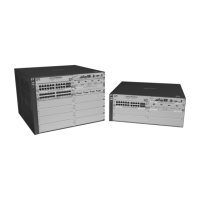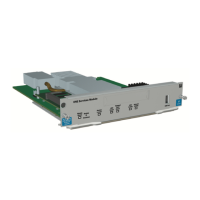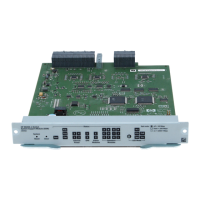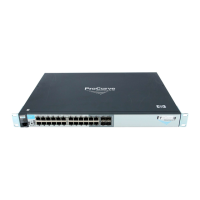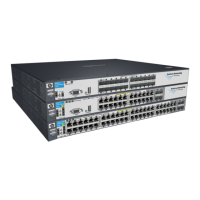Quality of Service (QoS): Managing Bandwidth More Effectively
Using QoS Classifiers To Configure Quality of Service for Outbound Traffic
Syntax: qos device-priority < ip-address > dscp < codepoint >
Assigns a DSCP policy to packets carrying the specified IP
address, and overwrites the DSCP in these packets with the
assigned
< codepoint > value. This policy includes an 802.1p
priority and determines the packet’s queue in the outbound
port to which it is sent. If the packet leaves the switch on a
tagged port, it carries the 802.1p priority with it to the next
downstream device. (Default:
No-override)
no qos device-priority < ip-address >
Deletes the specified IP address as a QoS classifier.
show qos device-priority
Displays a listing of all QoS Device Priority classifiers
currently in the running-config file.
For example, suppose you wanted to assign these DSCP policies to the packets
identified by the indicated IP addresses:
IP Address DSCP Policies
DSCP Priority
10.28.31.1 000111 7
10.28.31.130 000101 5
10.28.31.100 000010 1
10.28.31.101 000010 1
1. Determine whether the DSCPs already have priority assignments, which
could indicate use by existing applications. This is not a problem if the
configured priorities are acceptable for all applications using the same
DSCP. (Refer to the
“Note On Changing a Priority Setting” on page 8-65.
Also, a DSCP must have a priority configured before you can assign any
QoS classifiers to use it.
)
The DSCPs for this
example have not yet
been assigned an
802.1p priority level.
Figure 8-13. Display the Current DSCP-Map Configuration
8-34
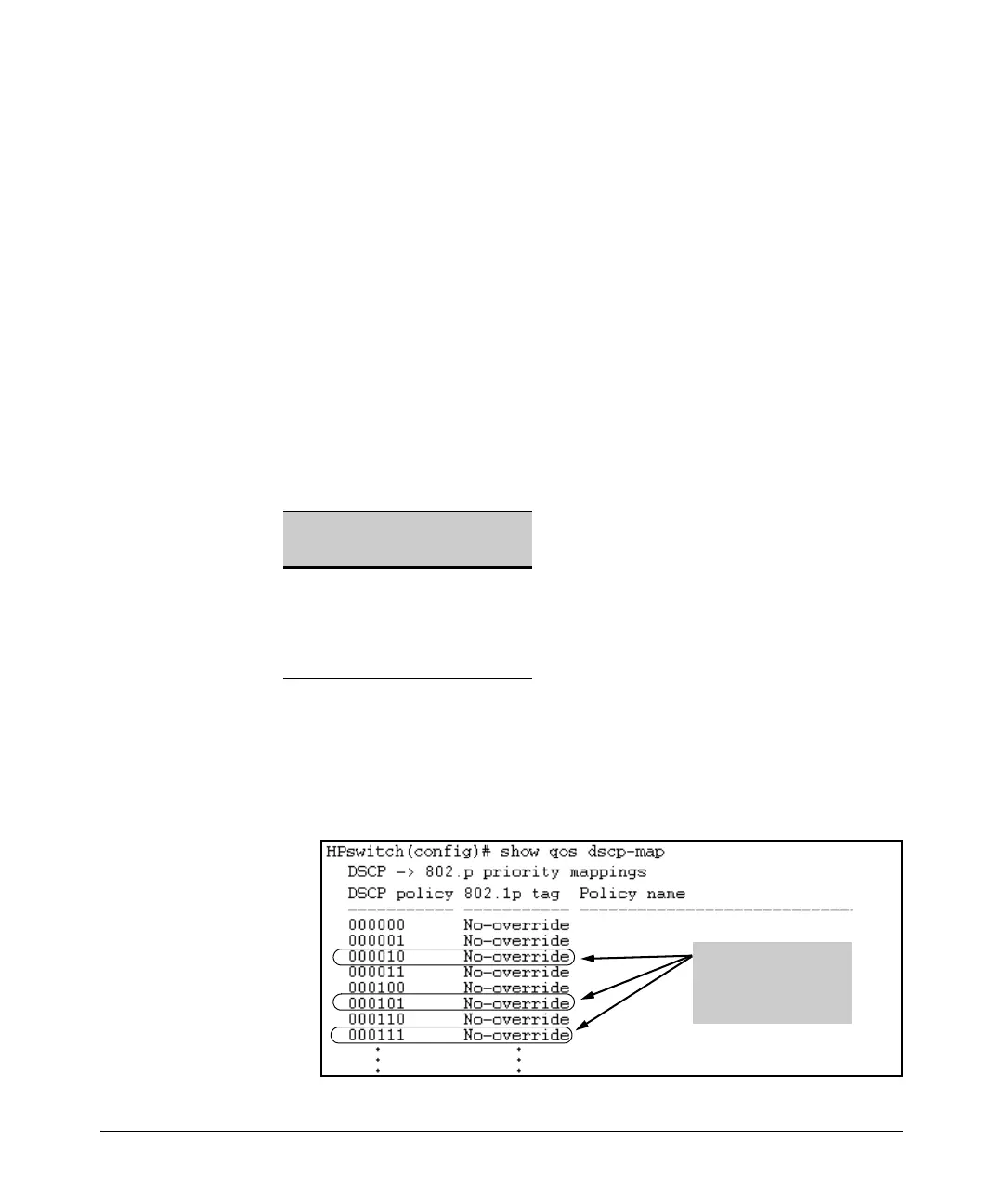